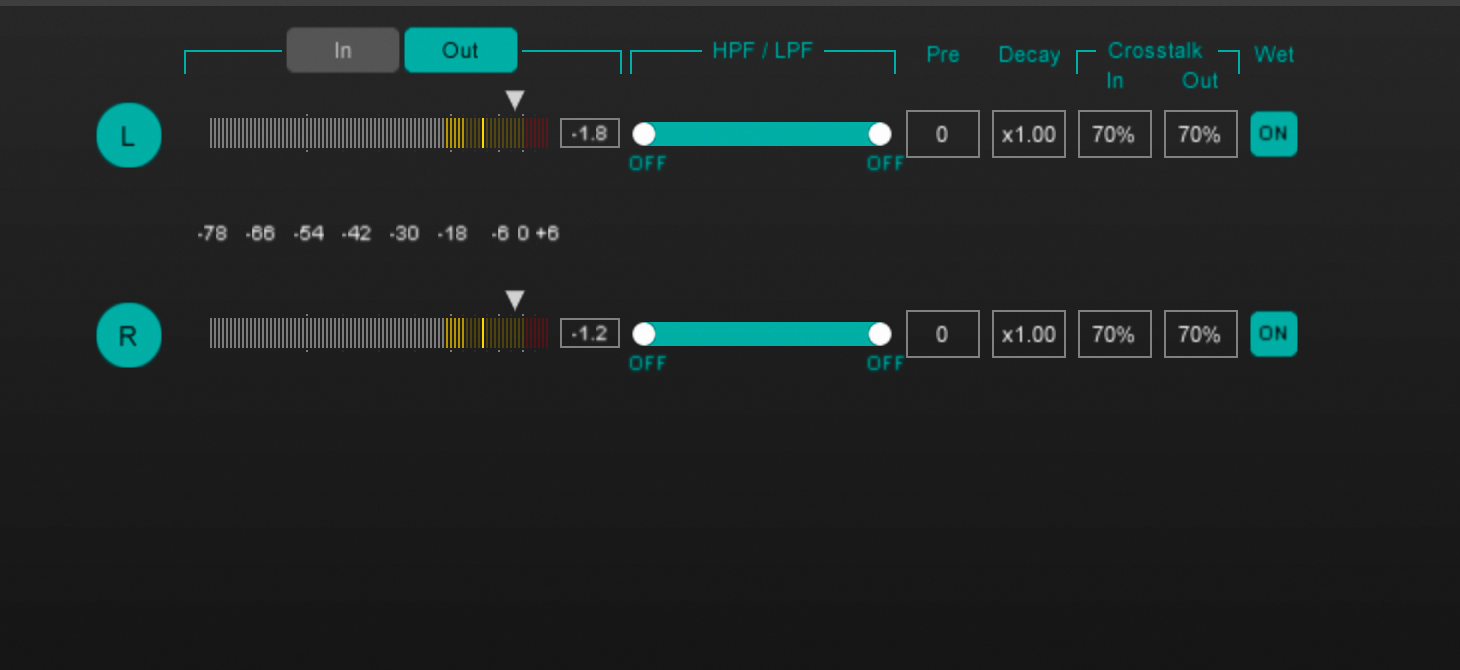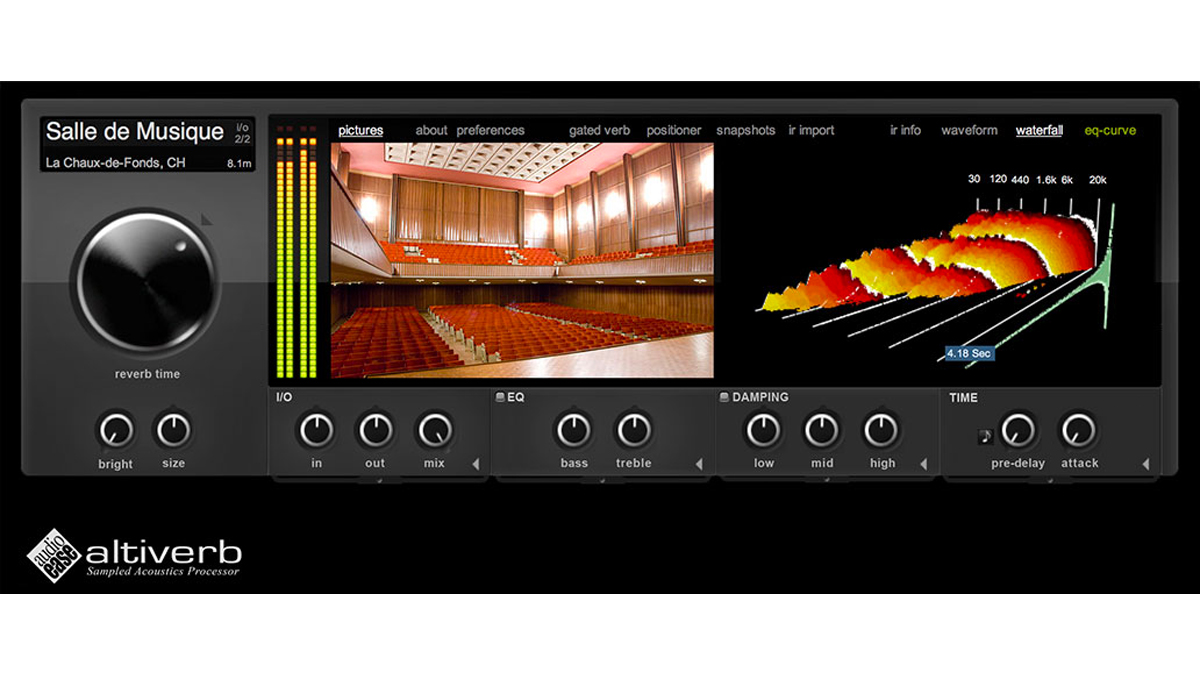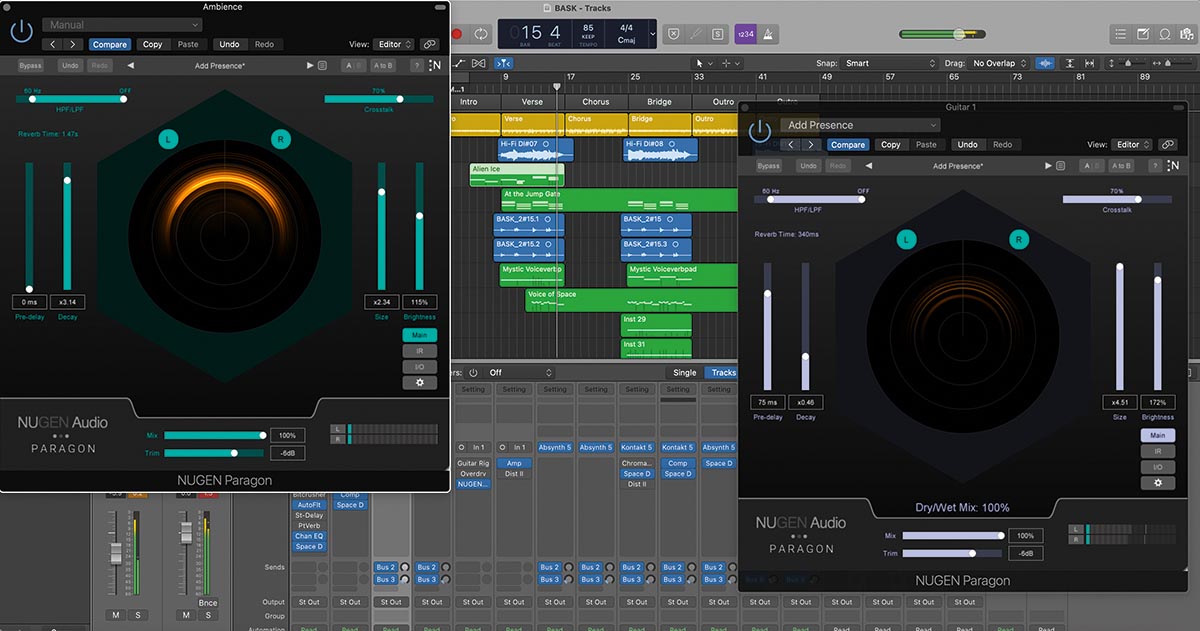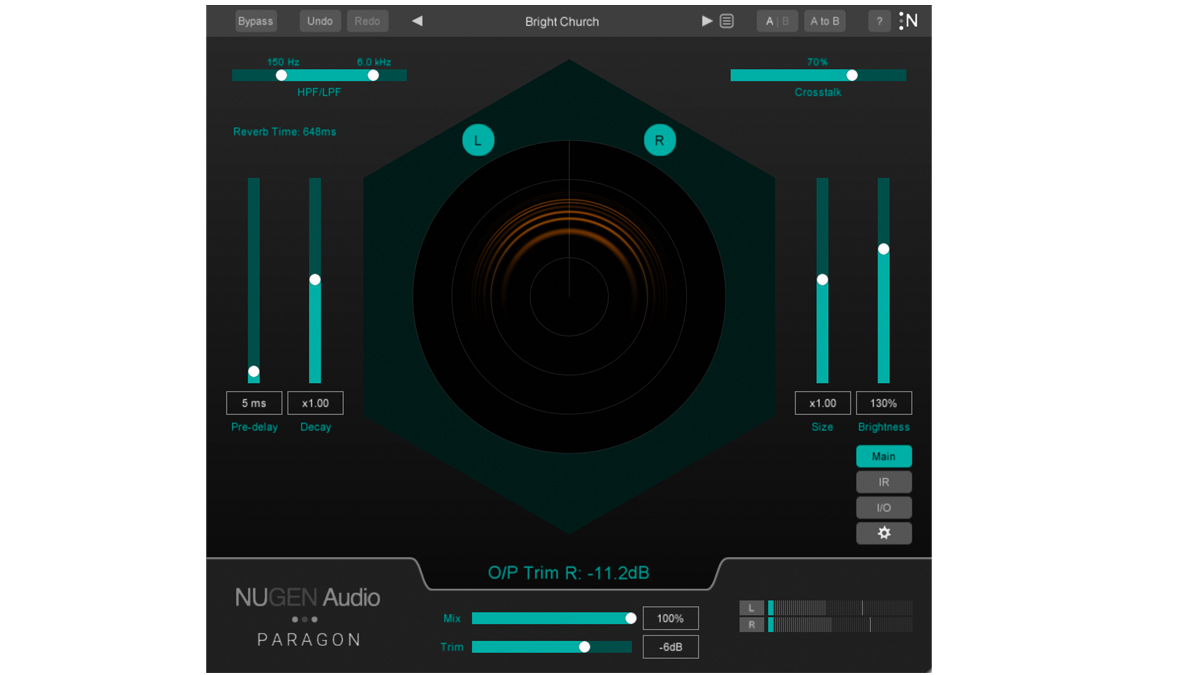MusicRadar Verdict
Paragon fuses the very best of both the physical and man-made worlds – its authenticity and scalability are groundbreaking. An excellent reverb toolkit.
Pros
- +
Impressive pro-level reverb.
- +
Huge scope to re-sculpt the real rooms.
- +
Independent channel control.
Cons
- -
Very occasional slowdown.
- -
Quite dense.
- -
Relatively high price point.
MusicRadar's got your back
What is it?
From slick, sound-refining plugins such as the bass-sculpting prowess of Monofilter and the fastidious Visualizer, to their polished mastering assistant MasterCheck, and innovative virtual gadgets such as routing co-ordinator SigMod, Nugen’s wares this last decade have proven uniformly trailblazing.
Though their spatially-oriented releases to date have been geared more at the post-production industry, the company’s first bonafide convolution reverb has universal application, and – used in a production context – provides spectacular natural reverb straight out of the box.
Its prospects become even more delicious when you factor in its bewildering power to manipulate these real room impulse responses in the same manner as a processed reverb.
Location, location, location
Paragon isn’t just a bold step for Nugen, then, with the plugin’s abilities affording it the honour of being the world’s first 3D-compatible convolution reverb. The control set here is one that you’d usually find on an algorithmic reverb.
So, although Paragon comes pre-loaded with legitimate room impulse response samples, it’s possible to re-shape these spaces and alter the room size, decay levels, frequency damping and brightness of them as if these were simple virtual constructs.

Nugen has very cunningly allowed for this control, by allowing Paragon to study these realspace samples on the fly, and then quickly render a new, manipulable, virtual model, via some complicated resynthesis.
In the most simple of terms, you could say that the real world IRs are being used as a bedrock for the plugin to cleverly craft these spaces mathematically. This all happens within the blink of an eye, with no noticeable artefacts as we expand and contract our spaces. But how, you might ask, does this actually sound?
From cavernous halls, gloomy churches, airy rooms and reflective clubs, the range of real spaces have been meticulously captured. These presets are easily labelled and aren’t overwhelming in number – and that’s kind of the point.
They serve as good groundings to start your own journey into crafting the perfect nuanced space for your project. With up to 7.1.2 audio channels and Dolby Atmos compatibility, Paragon looks set to be all things to all people, especially when you consider that these settings can be further modified on a per-channel level.
Performance and verdict
The UI of Paragon is centred around a visually engaging ‘surround scope’, somewhat reminiscent of a radar (or a motion sensor from Aliens). This increases in brightness depending on the IR’s reverb strength in specific areas of the virtual room, the position of audio channels in the virtual space is changeable by moving around the various circular nodes, panned left and right by default.
At either side of the central scope, are controls for Pre Delay and Decay (on the left) and Size and Brightness (on the right). This is where we can get playful, and knock through the real-world rooms to make them larger, or build virtual walls to yield tighter spaces, as well as adjusting the impulse response to grant clearer higher frequencies.
The under-the-hood equations that are being live calculated to make this operate at near-imperceptible speed, though this isn’t entirely unnoticeable, it’s still very quick on our test 2.3Ghz Mac.

• Audio Ease Altiverb 7
It's still not really aimed at 'electronic' producers, but if you're looking to put a guitar, piano, drum kit or singer in a totally convincing hall, church, studio, stadium, club or, er, bucket, there's simply no finer solution - we can't recommend it enough.
If you're looking for a more capable and professional version of SIR or simply a great convolution processor, SIR2 fits the bill nicely.
Switching to the IR Panel opens Nugen’s selection of IRs and renders them via a detailed spectrogram, accompanied by a handy Frequency Graph Display beneath, the frequency is shown on the X-axis and initial dBFS or decay-DB-per-second are on the Y.
In this section of the plugin, we can throw some demo sound files against the Impulse Response – the sonic equivalent of throwing stones into a pond. There are a gamut of further tweaks we can make, including the shape of the EQ and the complexity of the resynthesized model of the IR.
It’s pretty astonishing to hear just how authentic Paragon can sound in practice. We apply the Bright Church IR – with some added EQ and room-size adjustments – to a DI’d guitar track. Immediately the ambience-free tone of our guitar is placed in a real-sounding, evocative space.
While this (technically speaking) is a virtual space rendered by the mathematics of a real-world room, it’s nigh-on indistinguishable from what we’d come away with if we had set up in our local village church, with the added benefit of it being entirely re-shapable throughout the process.

Paragon of virtue?
Nugen has crafted a reverb of remarkable scope here, with the authenticity of the room sounds – even after excessive tweaking – being truly impressive.
Further ‘expert’ options can be brought up by clicking the Nugen logo in the bottom left of the UI; here, you can automate all parameters if you wish, though considerable lag can be introduced and this does require a re-loading of the plugin. All-in-all though, Paragon is one of the most unique and adaptable reverbs we’ve ever worked with.
Though some may not be that keen on spending their precious music-making time painstakingly designing their own spaces, the pre-loaded IRs in themselves, provide consistently authentic sound reverbs, and can be effortlessly applied. Those working in fields such as sound design, soundtracking or audio post-production will find Paragon an outstanding space designer.
MusicRadar verdict: Paragon fuses the very best of both the physical and man-made worlds – its authenticity and scalability are groundbreaking. An excellent reverb toolkit.
The web says
"Paragon is a true convolution reverb, but it lets you tune the settings to a level that is uniquely deep. Paragon offers control over decay, room size and brightness modelled on 3D recordings of real spaces with no time-stretching or removal of samples but with spectral analysis and precise EQ of the Impulse Responses."
Red Shark News
Hands-on demos
NUGEN Audio
Production Expert
Specifications
- TYPE: Convultion reverb plugin (AAX, VST3, AU and AudioSuite, in 64-bit only)
- KEY FEATURES: Atmos-compatible convolution reverb
- SYSTEM REQUIREMENTS: Mac OSX 10.9 / 512 MB RAM
Windows (64 bit) Vista or above / 512 MB RAM - CONTACT: NUGEN Audio
Computer Music magazine is the world’s best selling publication dedicated solely to making great music with your Mac or PC computer. Each issue it brings its lucky readers the best in cutting-edge tutorials, need-to-know, expert software reviews and even all the tools you actually need to make great music today, courtesy of our legendary CM Plugin Suite.
“Built from the same sacred stash of NOS silicon transistors and germanium diodes, giving it the soul – and snarl – of the original”: An octave-fuzz cult classic returns as Jam Pedals resurrects the Octaurus
What’s the buzz? Meet Yellowjacket, Cherry Audio's recreation of EDP’s trend-setting Wasp from 1978
“A fabulous trip through all eight songs by 24 wonderful artists and remixers... way beyond anything I could have hoped for”: Robert Smith announces new Cure remix album











